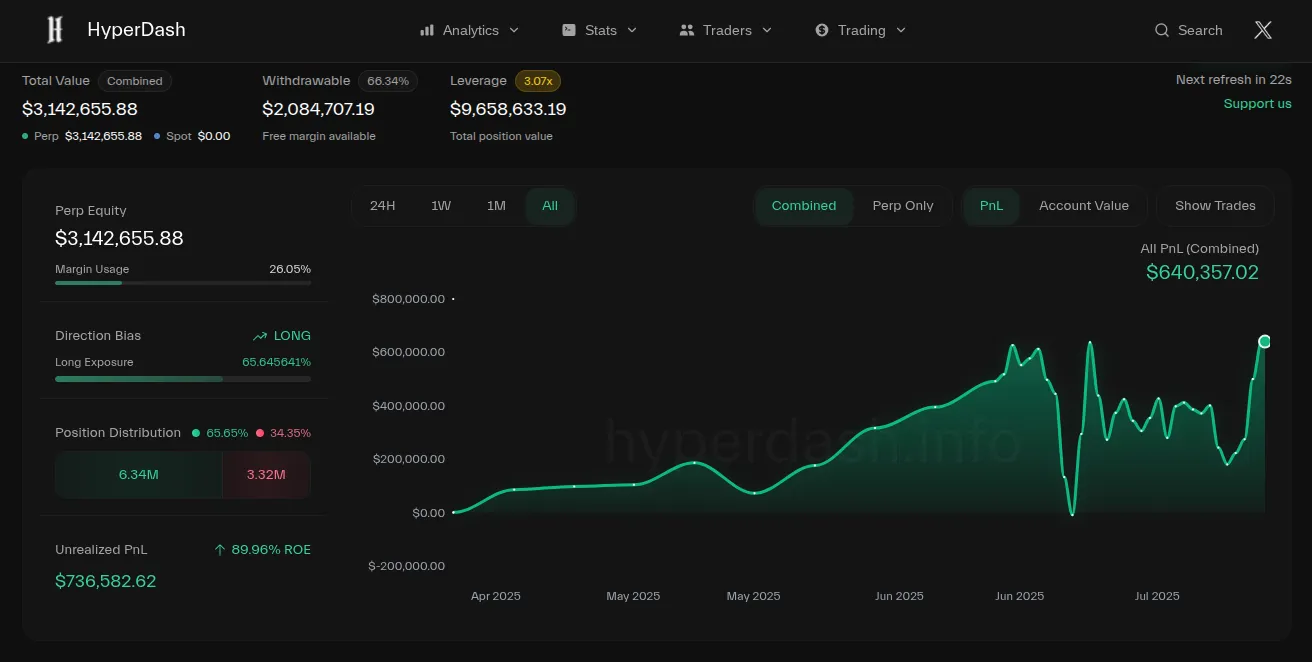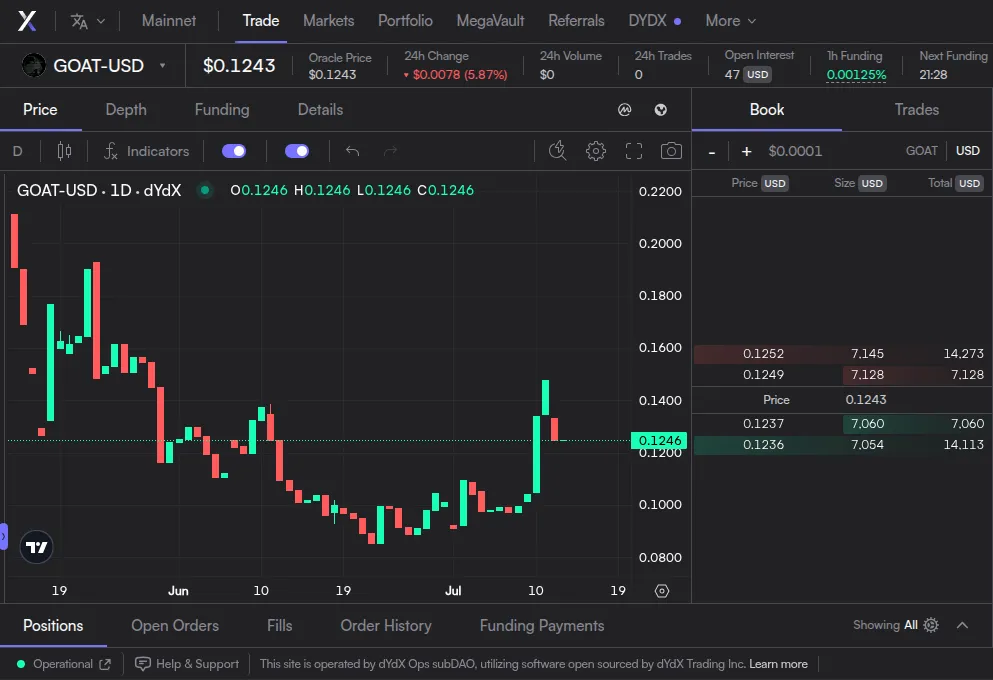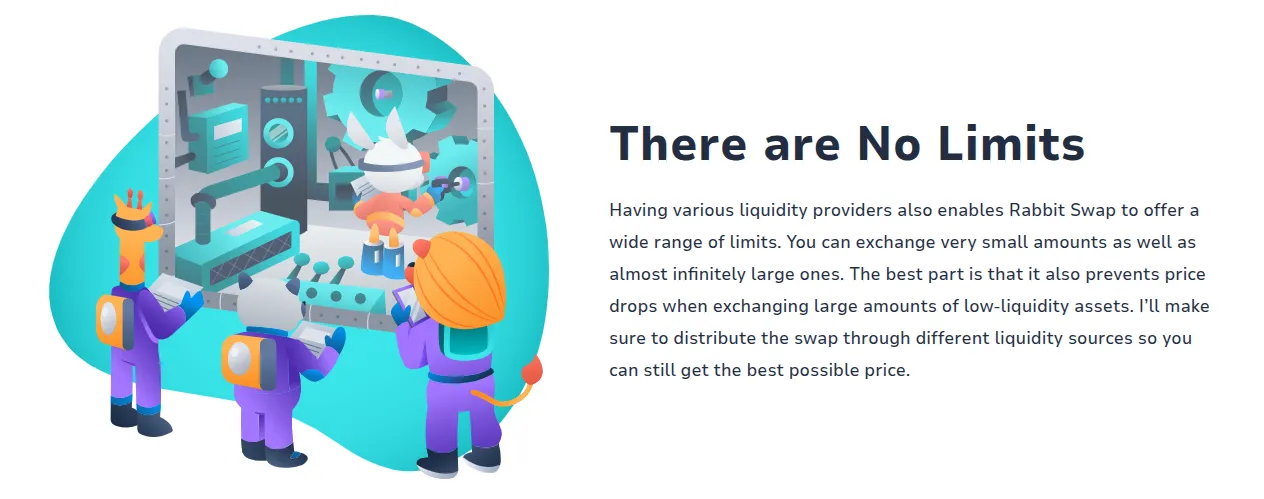
Hidden Traps of On-Chain Copy Trading
There’s always a temptation in crypto: find a simple way to “trade like the pros.” And with blockchain, this dream feels more attainable than ever - because everything is visible. Just watch what a big player does, and follow in their footsteps. Especially now, when entire services are built to help you copy trades on-chain.
You can “tap into” the success of experienced traders and earn money almost automatically. And when it comes to on-chain copy trading, it seems like an unprecedented opportunity - something no other market outside of crypto could ever offer. Here, no one can trick you: everything runs through the blockchain, where transactions are transparent and, more importantly, real.
But in practice, copy trading is full of hidden risks - especially for those who rely too heavily on others’ expertise without understanding what they’re getting into.
Anyone hoping to profit from someone else’s strategy should be aware of these risks.
Risk 1: Becoming Fuel for Someone Else’s Rocket
One of the most deceptive risks in copy trading is the potential for price manipulation by the lead trader. If a trader knows that dozens of investors are automatically copying their every move, they can turn these followers into a personal liquidity pool - quite literally transferring money from their accounts into their own.
Here’s how it works. The trader opens a position on a low-liquidity pair (where even a few thousand dollars can shift the price significantly) - for example, on a decentralized exchange like dYdX, where launching a new trading pair requires only $10,000 in liquidity. Their market order sweeps the best bids, pushing the price up instantly. Right after that, their followers’ bots or accounts copy the same trade, but at a slightly higher price, since the price has already moved. If the trader has a sell limit order already set slightly above, those follower buys fill his sell order - netting him a profit.
Let’s look at a real order book from one of dYdX’s pairs to see how feasible this is.

The order book for one of the pairs contains just four orders - two on the buy side and two on the sell side - each worth about $7,000. Could all of these orders belong to the same trader? Absolutely. The total volume of $28,000 is well within reach for many participants in the crypto market. You don’t have to be a whale - especially if you’re trading with leverage.
Now imagine that the trader knows they have followers who mirror their trades, contributing a combined volume of about $7,000. A simple, exploitable setup becomes possible - as long as the orders at 0.1252 and 0.1237 are placed by the same person, using the main, publicly tracked account:
- The lead trader sends a market buy order for over $7,000 and purchases a perpetual swap on the GOAT token at 0.1249.
- The top offer in the order book now becomes 0.1252.
- Followers copy the signal and send their own market buy orders, which get filled at 0.1252. And who’s on the other side of those trades? That’s right - the lead trader himself.
- His sell at 0.1252 triggers automated sell orders from his followers.
- The followers’ sell orders hit the next best bid at 0.1237. And who’s buying from them now? Once again, the lead trader.
As a result, the trader’s on-chain stats now show:
- Buy at 0.1249
- Sell at 0.1252
- Buy again at 0.1236
All green numbers.
And what about the followers? They’re buying higher and selling lower - locking in losses. Their copies come with a delay and slippage, so instead of sharing the profits, they’re left with losses.
The key point here is that this manipulation can be repeated over and over - especially if the followers don’t notice what’s happening. And they probably won’t - this spiral can drain their funds in seconds. Each cycle improves the trader’s public stats (e.g., +1% per loop), attracting new followers, while earlier ones quietly bleed money.
Bottom line: in low-liquidity markets, the lead trader can effectively trade against their own followers. What may look like a winning strategy to newbies is in fact a mini “pump and dump” where their capital is used to fill the trader’s exit orders.
Even if the trader isn’t acting maliciously, the copy-trading mechanism itself can turn you into a passive victim of market effects. When hundreds of people mirror a whale’s move, they create noticeable buy or sell pressure - which means that anyone copying later gets a worse price. The lead trader’s profit becomes diluted, and often turns into losses for the crowd that came after.
This is especially noticeable in volatile markets - and few are more volatile than crypto.
Risk 2: Caught in the Crossfire Between the Whale and the Crowd
In early 2025, a trader known as James Wynn gained massive attention on the on-chain derivatives platform Hyperliquid. His wallet could be watched in real time: tens of millions of dollars in balance, ultra-leveraged positions, and the first-ever publicly recorded trade in blockchain history to exceed $1 billion in size. Every move was visible - anyone could open Hyperliquid, view Wynn’s positions, and even subscribe to bots sending alerts: Wynn entered a trade, Wynn exited, Wynn doubled down.
Copy traders rushed in. For many beginners, it felt like getting a seat at the table with a real whale. They connected bots or manually mirrored his trades - some instantly, some with delays - all hoping to ride the wave. And for a few weeks, Wynn was on fire: his unrealized profits soared, and every step he took was debated in crypto chats.
But soon, the countdown to collapse began. Wynn entered a streak of losing trades, and his oversized leveraged positions began to trigger liquidations. All of this unfolded in full view - balance charts, order books, growing panic on X: “Wynn is on the edge!” The copy traders were panicking too. Each follower’s liquidation pushed the price further against Wynn’s position, compounding the losses - for him and for everyone following him.
It all came to a head this week. After multiple million-dollar liquidations, Wynn stepped away from public view and even shut down his X account.

Social media erupted. Some mocked him. Others expressed sympathy. Many simply felt the sting - they had lost money by following the trades of a “star.”
What made this case especially interesting was how it divided the market. While many retail investors interpreted Wynn’s aggressive long positions as a bullish signal and followed him in, more experienced traders took the opposite side. Wynn’s highly exposed positions acted like a magnet for counter-strategies. Some traders openly sought to profit by betting against him - and they did. As the market moved against the whale, these contrarian traders came out on top, while Wynn and his followers took the losses.
This case illustrates an uncomfortable truth: when you copy the trades of an on-chain whale, you must remember that part of the market is deliberately hunting your hero. The whale’s liquidation zones are visible to everyone, and counter-trading those zones can be more profitable than following the whale’s lead.
Pushing it further - public visibility makes even the strongest traders vulnerable. They become targets for front-runners, opportunists, and spectators, while their followers become a destabilizing force. All it takes is one misstep, and the crowd that once lifted the whale can turn into a stampede that crushes him.
Risk 3: Failing to Handle the Psychological Pressure of Drawdowns
Trading strategies that always generate profit are extremely rare. You might point to arbitrage, carry trades, market-making in flat conditions, or maybe selling options with proper hedging. But the vast majority of traders - even those with successful strategies - go through losing months, or even losing years.
In the crypto market, it’s especially difficult to assess a trader’s long-term track record. Very few trade exclusively from a single blockchain address over several years. But even on short timeframes, almost any strategy will show peaks and valleys.
Take, for example, a performance chart of one trader whose strategy is available to copy via the Hyperdash platform.

Over three months, this trader made more than $600,000 in profit on a portfolio of about $3 million. Impressive by any standard. But if you look closely, you’ll notice a sudden drop in his profit curve - from that same $600K peak all the way down to zero.
Now imagine you had started copying his trades in mid-June - right at the start of that sharp drawdown. Would you have had the mental resilience to keep following a complete stranger, trade after trade, as each one brought in more losses?
Personally, I wouldn’t. And I would have missed the very trades that brought the strategy back to $600,000 in profit. Most likely, I’d resume copying just in time for the next drawdown.
This is what makes copy trading so psychologically brutal: you’re trusting someone else’s system, but still suffering your own emotional reactions.
It’s worth repeating: every trader experiences losses. If a trader’s history shows nothing but smooth upward growth, it likely just means you’re looking at too short a timeframe to see the full picture. There’s always a rough patch - the only question is whether you’ll hit it early or late in your journey as a copy trader.
Copying someone else’s trades doesn’t remove the emotional burden. In fact, it can make it worse - because you’re dealing with drawdowns without fully understanding the logic behind the trades. That makes it even harder to stay the course.
Risk 4: Not Seeing the Full Picture
Perhaps the most subtle risk in on-chain copy trading is the illusion of transparency. Yes, you can see all the transactions tied to a given wallet. You can analyze each trade… but only within the scope of that one address. What other wallets does the trader control? You don’t know.
Let me illustrate this with an example from a part of the crypto industry I know well - crypto swapping services. Imagine you visit the site rabbit.io and exchange a large amount of BTC for USDT. If you’ve used the platform before, you know there are no upper limits - you can swap virtually any amount.

To operate at this scale, a service provider has to hedge risk. After receiving a large amount of BTC from clients and sending out a matching amount of USDT, the provider needs to open a short on BTC/USDT somewhere - maybe using futures or perpetuals. Otherwise, a sudden drop in the BTC price could leave them with significant losses.
Now, if the provider opens that short on a decentralized platform, everyone can see it. But they don’t see the context. They don’t know that the position isn’t speculative - it’s a hedge. Even if it’s a large trade, copying it makes no sense. The provider might close the position at a worse price and still lose nothing - their trading loss is offset by exchange income. Thanks to such hedging, they can offer better exchange rates regardless of market swings - without fearing losses from volatility.
But what will offset the loss for someone who blindly copies that position? Nothing.
More broadly, not every crypto trade is speculative. A whale buying some token isn’t necessarily signaling an imminent pump. It’s naive to assume every large on-chain move is a prelude to a price rally.
The crypto market is full of diverse motives: treasury allocations, treasury management, vesting unlocks, token distributions, risk hedging, internal rebalancing - none of which are visible at first glance.
And that’s the key risk: by copying a trader’s visible on-chain actions, you’re potentially replicating only one side of a much larger strategy - while missing critical context like hedges, time horizon, or intent.
So even if you’re mimicking what seems like a “smart whale,” you might be copying the wrong reason, in the wrong context, with no protection. And that makes the outcome completely different.
So What’s the Verdict?
Copy trading can be a tempting tool - but it’s far from being a magic button for profit. It carries unique risks that many beginners never even consider: from slippage and execution delays to deliberate manipulation and simple mismatches in strategy. On-chain transparency doesn’t eliminate these risks - and in some cases, it introduces entirely new ones.
If you decide to copy trades, do it consciously. You can borrow ideas and learn from others, as long as you treat it as a learning process and a source of insight - not as a substitute for your own strategy. Blockchain doesn’t offer “fair signals for everyone.” It offers equal access to data - but wildly unequal ways to use it.
On-chain copy trading is a chase after a shadow. You only ever see the silhouette of someone else’s strategy - and that silhouette can be deceiving. Stay skeptical of the idea that you can “ride the whale.” Sometimes what looks like easy prey turns out to be a trap - with you as the target.
Beware the invisible sharks swimming in the transparent waters of the blockchain.













